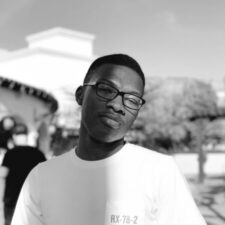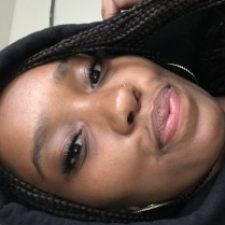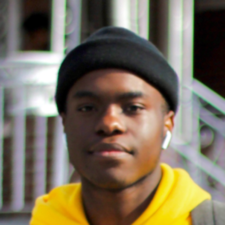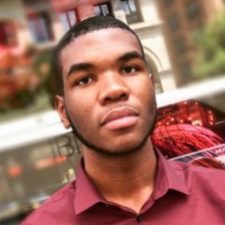You must be logged in to reply to this topic.
- Due by 10/15 by 5PM: Annotated Bibliography
-
September 24, 2019 at 10:01 pm #55730

Amber SlaterParticipantHi all! Post your annotated bibliography here. You need at least two scholarly sources and two general sources. See the reading “Exploring Topics and Creating a Research Proposal” for a sample on pages 310-311.
You should include an MLA citation of your source, along with at least 100 words of description below the citation that: 1) summarize the source, and 2) explain why it will be useful to your paper.
Here’s a sample annotated citation (you’ll have four of these total in your post):
Children’s Hospital. “Vaccine Science: Vaccines and the Immune System.” Children’s Hospital of
Philadelphia, The Children’s Hospital of Philadelphia, 20 Nov. 2014,
http://www.chop.edu/centers-programs/vaccine-education-center/vaccine-science/vaccines-and-immune-system.In this source, the Children’s Hospital of Philadelphia lays out a theoretical situation in which two kids, Chip and Dale, contract the measles virus. However, Chip gets very ill with a fever and is rushed to the hospital, but Dale never reaches that stage because his symptoms did not progress. This is a perfect example which highlights the importance of immunizations and the amount of pain they can hinder. Although both children were not vaccinated in this case, they were both based upon the luck of the draw. I want to use this in my paper to state firmly that vaccines can take the luck factor out of the equation by controlling the pathogen from the first encounter, and not having to play catch up and wait it out once it is too late.
October 12, 2019 at 9:40 pm #55978
Leanie TejadaParticipant1) Fashion United. “Savage x Fenty, one year later: what’s Rihanna’s impact on the lingerie market?”, 06 May 2019,
https://fashionunited.com/news/business/savage-x-fenty-one-year-later-what-s-rihanna-s-impact-on-the-lingerie-market/2019050627643In this source, Fashion United explains the impact that Savage x Fenty has had on Rihanna’s fans and other brands. It explores the way that it has motivated other lingerie businesses such as Victoria’s Secret to become more inclusive towards women of different sizes and how her understanding of representation has led to her becoming one of the biggest competitors in the market. This would be useful because it highlights what fans can expect of Rihanna from her other business if she does decide to stop making music and how she impacts her fans and others.
2) LaBouvier , Chaedria. “Why Fenty Beauty Isn’t Just Another Celebrity Beauty Brand – It’s a Revolution.” Allure. 13 Oct. 2017,
https://www.allure.com/story/how-rihanna-fenty-beauty-has-changed-the-beauty-industryIn this source, LaBouvier examines the success and positive reviews that Fenty Beauty has had since launch. It includes the diverse options of various skintone foundations that Fenty Beauty has added that has pushed other beauty companies to do the same. It mentions multiple accounts of Navy fans tweeting about Sephora stores being sold out of certain items due to how positive the feedback has been and how excited they are about finally having a makeup line that includes them. This would be useful because it highlights another side of Rihanna that isn’t music that allows her fans to be included. It gives them the option of not having to rely on Rihanna to finally create music when they can still be a part of her growth as a businesswoman with her multiple businesses. It also describes hope Rihanna impacts the Navy.
3) Bonesteel, Matt. “Rihanna reportedly turned down Super Bowl halftime show in support of Colin Kaepernick.” Washingtonpost.com, 19 Oct. 2018.
Gale Academic Onefile, https://link.gale.com/apps/doc/A559020514/AONE?u=cuny_nytc&sid=AONE&xid=c5a36092.In this source, Bonesteel examines a recent interview Rihanna did in which she is asked why did she turn down a chance to perform at the Super Bowl half time show. Her reasoning being that she choose to stick behind Colin Kaepernick and wanted to show her support. This would be useful because it can show the type of influence Rihanna can have on the Navy as a role model, it’s possible that she can change their opinion on certain issues if she stands behind that issue.
4)Fleetwood, Nicole R. “The case of Rihanna: erotic violence and black female desire.” African American Review, vol. 45, no. 3, 2012, p. 419+. Gale Academic Onefile,
https://link.gale.com/apps/doc/A342678987/AONE?u=cuny_nytc&sid=AONE&xid=04f51da4In this source, Fleetwood uses “the case of Rihanna” to refer to the assault, the reportage of the assault, the media coverage in the immediate aftermath, the way in which the incident gets folded into domestic-violence activism and rhetoric, and the continued media and scholarly scrutiny of both Rihanna and Brown since the incident. This source is useful because it examines the Rihanna persona of how she is always sexual on and off stage before and after Chris Brown’s assault. The music that Rihanna created to reimagine her persona post-assault was viewed as very violent due to the fact of how erotic the videos were and how violent the lyrics were. This can demonstrate the connectedness that Rihanna has with the Navy if she is able to show various sexual scenarios, scenes of seduction or subjugation of her life. She shows vulnerability with her fans that not many other artists do and this can create even deeper bonds between her and fans who have listened to her music since the beginning.
October 13, 2019 at 5:21 am #55980
HadassahParticipant1) Ahmed, Asam. “A Note on Calling Out Culture.” Briarpatch Magazine, Politics, Society, 2 Mar. 2015, handbook.law.utoronto.ca/sites/handbook.law.utoronto.ca/files/users/alzner/A%20Note%20on%20Calling%20Out.briarpatch.pdf. When I read this article, it gave me a brief understanding about what “cancel” or “call-out” culture is. This article discusses how calling out culture can negatively affect individuals. Since we’re at an age where everything is public. You have to be mindful and careful about you say and how you view situations because you can be criticized harshly. With the information from the article it can help me with the solutions that can make calling out culture be a neutral effect, where it doesn’t need to be more of a negative effect on people.
2) Bromwich, Jonah Engel. “Everyone Is Canceled.” The New York Times, The New York Times, 28 June 2018, http://www.nytimes.com/2018/06/28/style/is-it-canceled.html. When you think of cancel culture, you can think of many things like- canceling a TV show or game, etc. What about people? If you ever heard of such a thing, then you’re in luck. This article explains the downs of cancel culture and how it doesn’t teach the person whose cancelled about their mistakes. If that’s the case, then everyone should be cancelled. This information can help me because it explains how negatively it can affect people. Not only that, but it gives some examples of celebrities that have done or said some things in either in the past of in the moment. People hardly ever understand that these people are humans too.
3) Ellis, Emma Grey. “Concerning Consent, Chappelle, and Canceling Cancel Culture.” Wired, Conde Nast, 11 Sept. 2019, http://www.wired.com/story/canceling-cancel-culture/ . While reading this article, I completely agree with the idea of cancelling out cancel culture. It even went further to say that it should be considered as a myth. Moreover, Ellis alluded to Dave Chapelle’s controversy in his latest Netflix original, “ Sticks and Stones” which discusses about today’s society. And he disagrees with the whole culture of cancelling people and other controversial situations. Not surprisingly, that people would already feel that need to cancel Chapelle. With this information it gives me insight on how cancel culture is unnecessary and another way to degrade a person based on what they say, think or do.
4) Grossfeld, Zach. “How Cancel Culture Is Toxic.” Auxoro, Auxoro, 9 Aug. 2019, http://www.auxoro.com/blog/2019/8/9/how-cancel-culture-is-toxic . This is a prime example of what cancel culture does to a person. It’s hard being known and that anything you say can be used against you because you disagree with a statement or voiced your opinion on something. Zach explains it in a way that because you who thinks differently from the majority of people, you’re considered a bad person. Make it make sense, it’s understandable if a person did something morally wrong or purposely say the wrong things against something but by the end of the day. They’re still human. To go even further, I can use this information on certain topics that cancel culture goes to cancel person based on their opinions.
5) Risam, Roopika, “Toxic Femininity 4.0” (2015). English Faculty Publications. 2.
https://digitalcommons.salemstate.edu/english_facpub/2 . This article gives an in-depth analysis about cancel culture. And focuses on the toxicity that stems from Feminists who find ways to cancel someone based on something they have said that was considered sexist or misogynist. It all starts from Twitter, a platform that is used for creating headlines by progressive public opinionators. I’m not saying that every progressive person is like this, but the small group of people who come up with these horrendous and stupid hastags and headlines to cancel someone. Even though, this article solely focuses on the negative effects of feminism represented in cancel culture, it is another reason why the information would be used to explain further about cancel culture.-
This reply was modified 4 years, 6 months ago by
 Hadassah.
Hadassah.
October 13, 2019 at 11:41 am #55982
StrongHavenParticipant1. Collins, Amy, M… “promoting Community Health”. AJN, American Journal of Nursing, vol. 112, no. 6, June 2012,pp. 65.66.doi: 10.1097/01.NAJ.0000415135.93053.08. This articles talks about a the process of the community health and how they are being neglected. This article discusses on a nurse who tries to improve care in the community. Along with her and other members they try to aid those who are in need of care.
2. “How To Get More People To Join Your Online Community.” Feverbee, 31 Aug. 2009, https”//www.feverbee,com/moremembers/.
This source is about how to get more people to join their online community it shows steps of what to take to get people involved. For example one of the steps is to Work on your invites, this means that are do’s and dont’s you should take before inviting people. This source is helpful to me because it will share information on how to get people to participated in communities.
are
3. Sliva , Mariana. “CREAR Futuros Aims to Help First-Year Students in Their First College Experience.” Tribuna CT, 8 Oct. 2016, http://tribunainenglish.com/news/crear-futuros-aims-to-help-first-year-students-in-thier-frist-college-experience/. This article talks more about the CREAR Futuros what they are about and what is the goal that they are trying to accomplish. How can they can assist the community here at city-tech. This source is valuable to me because i will have detail information about CREAR Futuros in order to write my essay.
4. Roberts, Sam. “Janet Lieberman, 97, a Force in community College Education, Dies.” Google, Google, 27 Mar. 2019, http://www.google.com/amp/s/www/nytimes.com/2019/03/27/ obituaries/janet-lieberman-dead-amp.html. This article talks about Janet Lieberman who is a educator innovator who made college more approachable to immigrant students and college students in LaGuardia community college. This article discusses how she and other foundations came together and found the solution to help students finish completing their degree.October 14, 2019 at 11:52 pm #55993
haqueParticipant1) Donnell, Hillary R. Youth Voice and the Promise and Peril of Affirmative Governmentality: An Analysis of New York City’s Borough Student Advisory Councils, 2019, pp. The Graduate Center, All Dissertations, Theses, and Capstone Projects.
This study addresses civil society and the state’s shifting approach towards the incorporation of youth in governmental decision-making since the 1990s, and the recent ascendance of youth voice councils as a method of civic engagement. It uses the New York City Youth Leadership Council Initiative and the Borough Student Advisory Councils as case studies. Relying on the author’s ethnographic participant observation and youth-voice frameworks, the paper provides an analysis of the individual, organizational and systems-level effects of the New York Department of Education’s BSAC program. Further, the paper discusses affirmative governmentality as a lens through which to critically examine the use of youth councils and youth voice initiatives. The NYC case suggests that, even as youth voice expands in municipal government, it does so in narrow, scripted ways– forwarding a model of affirmative governmentality in the process. The analysis raises questions about the opportunities and limits of youth councils as strategies for meaningful youth politicization.
2) Bang, Hee. “Promising Homework Practices: Teachers’ Perspectives on Making Homework Work for Newcomer Immigrant Students.” The High School Journal, vol. 95, no. 2, 2011, pp. 3–31.
This study examines the homework practices of eight teachers working in a high school designed to serve newcomer immigrant students. Individual structured interviews were conducted in which teachers working in an innovative setting explained their purposes of assigning homework, their beliefs about factors affecting their students’ homework completion, and any adjustments they may make in designing or assessing homework for their immigrant students. The responses of these teachers provide insight into challenges that newcomer students encounter in their efforts to complete assignments outside of class, as well as ways in which homework may be adapted to support student learning. Implications for schools and teachers serving diverse students are discussed.
3) Reyes, Luis. “Minding/Mending the Puerto Rican Education Pipeline in New York City.” Centro Journal, vol. 24, no. 2, 2012, pp. 140–159.
New York City has been the gateway city in the United States for the Puerto Rican migration as well as the locus for a significant proportion of the Puerto Rican student population. They continue to experience chronic underachievement as reflected in what has been characterized as a “leaky education pipeline.” Puerto Rican youth face numerous social and economic barriers and have been concentrated in high schools where students have less than a 50/50 chance of graduating on time. These schools also spent less-per-pupil, were more segregated, and more overcrowded when compared with their affluent, white majority suburban counterparts. Now, many of these so-called “dropout factories” in Puerto Rican/Latino neighborhoods are being subjected to closing, restructuring or phasing out. Despite these realities, there is a dearth of publicly available, Puerto Rican-specific student data at all junctures in the education pipeline. This paper discusses what we know about the “leaky pipeline” absent such data and analyzes the possible policy and programmatic solutions in light of the larger “education reform” climate in New York and in the U.S. as a whole.
4) “Programs for English Language Learners.” English Language Learner Programs, https://www.schools.nyc.gov/multilingual-learners/process/programs-for-english-language-learners.
The goal of the program is for students to learn how to speak, read, understand, and write in two languages, and also learn about and appreciate other cultures. Transitional Bilingual Education Transitional Bilingual Education programs put together students who speak the same home language so they can to learn to speak, understand, read, and write in English while continuing to learn in their home language. The students learn subjects, such as math and science, getting help in their home language, while they learn English. As students’ English improves, they spend more time learning in English and less time learning in their home language. The goal of the program is to transition students to an English-only classroom setting.
October 15, 2019 at 1:41 pm #56005
Farai MatangiraParticipantSamaranayake Chinthaka B, Arroll Bruce, Fernando Antonio T, 3rd. “Sleep disorders, depression, anxiety and satisfaction with life among young adults: a survey of university students in Auckland, New Zealand.” “The New Zealand Medical Journal”, Vol 127 No 1399(2014), http://www.nzma.org.nz/journal/read-the-journal/all-issues/2010-2019/2014/vol-127-no-1399/6233. Accessed 12 October 2019.
This source aims to determine how sleep disorders, depression, and anxiety affect the lives of young adults at a university in New Zealand, as well as how they are correlated to the overall with life among students. I plan on using this source to elaborate on the argument of how depression and anxiety among students affect their schoolwork and daily lives.Forquer PhD LeAnne, Camden Adrian BS, Gabriau Krista M. BS, Johnson C. Merle PhD (2008) “Sleep Patterns of College Students at a Public University”, Journal of American College Health, Volume 56 Issue 5(2008), 563-565, https://doi.org/10.3200/JACH.56.5.563-565. Accessed 12 October 2019.
This source studies the sleep patterns of college students and tries to identify potential problems and solutions. It aims to highlight how sleep problems may interfere with the daily lives of the students as well as provide a remedy to the issue. I plan on using this source to further elaborate on the point of sleep patters and their correlation to the overall productivity of college students.Stott Rory, “For and Against All-Nighter Culture: ArchDaily Readers Respond.” ArchDaily, https://www.archdaily.com/616567/for-and-against-all-nighter-culture-archdaily-readers-respond. Accessed 13 October 2019.
This article investigates and gathers firsthand information from architecture students and teachers on their opinions on 24-hour studio work in architecture education. It tries to gain information from different perspectives and form an argument for or against the issue. I plan on using this source to develop an analysis from student and teacher opinions on the issue.Block India, “Architecture students “considered suicide” over long hours, say #dezeenchat participants.” Dezeen, https://www.dezeen.com/2019/07/16/burn-out-design-education-mental-health/. Accessed 13 October 2019
This article highlights how the demands and heavy workloads placed on architecture students affects their mental health. This source collects data from students, teachers and professionals. I plan on using this source to develop an argument on the mental health effects of student burnouts and lack of sleep.October 15, 2019 at 4:34 pm #56020
AjaiahParticipant1) Mazique, Brian. “’FIFA 20′ Review: The Good, The Bad And The Bottom Line.” Forbes, Forbes Magazine, 23 Sept. 2019, http://www.forbes.com/sites/games/2019/09/23/fifa-20-review-the-good-the-bad-and-the-bottom-line/#7432bce82aee.
In this article, a game reviewer from Forbes assesses the new EA Sports title “FIFA 20”. The reviewer uses his experience with the FIFA games, along with problems brought by the community to explain whether the game is a step up or step down. He concludes that the game is a step up in reference to the actual game play wise but game modes that aren’t Ultimate Team just aren’t made nearly as well as they should be. He highlights how game modes such as “Career Mode” is stale and suffer from a lack of innovation. The lack of innovation is due to the lack of interest given to other modes due to the lack of money they generate. Most importantly, Mazique says the only way to fix faulty concepts in Ultimate Team and other game modes is to hit them where it hurts and stop playing and/or spending money on the game because if a majority of the community did this, EA would have no choice but to provide improvements.2)Dodd, Renee, Tyler Faust. “Video Game Addiction Symptoms: Should I Be Concerned?” Addictions, 13 Feb. 2019, http://www.addictions.com/video-games/video-game-addiction-symptoms/.
This article contains information on the symptoms of video game addiction. One of the most important being the overspending of money which is highlighting as a real problem for adults as it may cut into important funds. In addition, it states this addiction will deteriorate personal hygiene, mental state, and social skills which cause you to fall back into a reliance on gaming. Overall the article shows the crippling symptoms of the very real gaming addiction.3)Hern, Alex. “Video Games Are Unlocking Child Gambling. This Has to Be Reined in | Alex Hern.” The Guardian, Guardian News and Media, 28 Dec. 2017, http://www.theguardian.com/commentisfree/2017/dec/28/video-games-unlock-child-gambling-loot-box-addiction.
Hern discusses how games exploit children with gambling although those companies will never refer to these activities as gambling. He mentions a case where a child used a parent’s card to purchase online currency in FIFA in order to open packs for a small chance at great rewards. The article goes on to explain that these cases aren’t uncommon and need to be addressed as it normalizes gambling at an early age. However, a possible solution was mentioned as EA also made Battlefront II which was slammed by the battlefront community for the exploitation of micro transaction which caused the transactions to be completely pulled from the game. Although it saved people’s wallets, the game was essentially abandoned by EA.4)Zendle, David, Paul Cairns. “Video Game Loot Boxes Are Linked to Problem Gambling: Results of a Large-Scale Survey.” PLOS ONE, Public Library of Science, 21 Nov. 2018, journals.plos.org/plosone/article?id=10.1371%2Fjournal.pone.0206767.
This article supports the notion that these packs which offer chances at great rewards are gambling. Belgium have taken action against this unregulated gambling and have stopped these transactions on the game in their country. EA contemplated contesting it but decided not to as it’s nearly impossible to argue against packs being gambling. This should come as a wake up call so EA can revamp their micro transaction system in order to save the massive cash flow coming from FIFA Ultimate Team.October 15, 2019 at 4:36 pm #56021
gamanya10Participant1) Science Direct. “How First-year Students Expressed Their Transition to College Experiences Differently Depending on the Affordances of Two Writing Contexts”
Science Direct, 17 July. 2017,
https://www.sciencedirect.com/science/article/pii/S8755461516300561This report gives researched facts about low income and first generation students in the United States and the transition from high school or work environments to college is fraught with negotiations. Despite record enrollment rates in American colleges only 11% of low-income and first-generation students earned a Bachelor’s degree within six years, compared to 54% of the general population. Continuing generation students may be able to gather advice regarding strategies for succeeding in the transition to college from communities of family and friends, while, first-generation students must often figure out how to manage the transition on their own or with the help of institutional resources like counselors and mentors. I want to use these facts and some more to show how important the SEEK program summer orientation days are important to new students and mostly first generation ones.
2) Science Direct. “Expressive innovation: How first-year college students introduced emoticons to the curriculum.”
Science Direct, 10 January. 2019,
https://www.sciencedirect.com/science/article/pii/S0885201418301230
This paper has two interrelated aims: first it shows how comments with CMC cues differed from comments without CMC cues. Second, it shows how students use of CMC cues in comments predicted their use of CMC cues in their subsequent individual post. To address this second aim, mixed methods including a path-analysis and a brief qualitative case study were used. Together these analyses show how writing in CMC contexts facilitates the cognitive and emotional process of becoming a college student. This study grew out of a two-year collaboration with administrators, faculty, and students at the college of study and with the New Media Lab at the CUNY Graduate Center. Participants were recruited from a first-year seminar for students in the Percy Ellis Sutton Search for Education Elevation and Knowledge (SEEK) educational opportunity program at a four-year urban public college. The participants were from diverse backgrounds and their parents’ or guardians’ highest level of education were mostly a high school degree or the equivalent, some reported that they only completed 8th grade, and others reported that their parents had no formal schooling at all. Overall more than 60% of the students were the first in their family to attend college. This source shows that SEEK welcomes students from anywhere and provide them with writing tools to succeed in College.
3) ProQuest “Percy Sutton Education Complex dedicated”
ProQuest, 30 Sep. 2010,
https://search.proquest.com/docview/763308157?accountid=28313&rfr_id=info%3Axri%2Fsid%3Aprimo
“Percy Ellis Sutton was a community man,” Walcott added, and the community – particularly students at the campus and a few of its most noted leaders – was in attendance. Schools Chancellor Joel Klein announced he had participated in a number of naming ceremonies, “but this one is special,” he said. The best way to honor Sutton is “to make education our new civil rights issue,” Klein added. Dinkins noted that Sutton was a founder of the SEEK (Search for Education, Elevation and Knowledge) program at CUNY, which facilitated the entry and matriculation of students into the citywide system. “He was a man of great vision, and he understood that we all stand on somebody’s shoulders,” Dinkins said. Each of the speakers, including Congressman Charles Rangel, former Mayor David Dinkins, New York City Comptroller John Liu, Council Members Inez Dickens and Robert Jackson, focused on different aspects of Button’s illustrious career, but education was a common theme. “Because he served our city with such distinction, he made it possible for me to be where I am today,” said Liu. I can use these information to show why the SEEK program was named after Sutton.4) Gale Academic OneFile “CCNY-INSPIRED SEEK Program Celebrates 50 Years of Success”
Gale Academic OneFile, June 2. 2016,
https://go.gale.com/ps/i.do?&id=GALE|A457012487&v=2.1&u=cuny_nytc&it=r&p=AONE&sw=w
SEEK has provided counseling, academic and financial support to students who qualify based on specific income and academic criteria. Notable SEEK alumni at CCNY include: Anthony Belli, marketing entrepreneur;Henry Garrido, labor leader and executive director of District Council 37;Oscar Hijuelos, the late Pulitzer Prize winning author; Lillias White, a Tony Award-winning actress; Judge Lottie Wilkins, retired New York Supreme Court justice; and Sekou Sundiata, the late Harlem-born poet and writer.And as it celebrates its golden anniversary, another cohort of SEEK achievers can thank the program as they march at CCNY’s 170th Commencement Exercises on June 3. That includes Orubba Almansouri who will join First Lady Michelle Obama, this year’s speaker and honorary degree recipient, on the dais.One of SEEK’s biggest success stories recently, Orubba is the Class of 2016 Salutatorian and the “Outstanding SEEK Graduate of the Year.”A double major who has completed BA degrees in English and history with a 3.97 GPA, the Yemeni-born Brooklyn resident credits SEEK for enabling her accomplishments that include numerous other awards. I can use this to prove how this program has been beneficial to so many people and how it can be for any student that takes advantage of all its ressources.October 15, 2019 at 5:54 pm #56028
Takira PooleParticipant1) Fidelman, Mark. “Here’s the Real Reason There Are Not More Women in Technology.” Forbes, Forbes Magazine, 15 July 2012, https://www.forbes.com/sites/markfidelman/2012/06/05/heres-the-real-reason-there-are-not-more-women-in-technology/#784b70f7b73e.
In this source, Fidelman discusses why women are not in technology positions. He talks to ten women who made it in the technology industry, and he asked them what advice you have for other women who are trying to do the same. He also asks them why aren’t there enough women in technology positions. Through his article, he discovered that women are not getting into technology because women are not choosing technology careers. Lastly, Fidelman discusses some solutions to getting women involved in technology. By getting young girls involved in math and taking a computer science class, this will help them to pursue a career in technology later in life. This information I collected will help me to come up with solutions for my paper and the reason behind the lack of women in tech.
2) Ribeiro, Ricky, et al. “Mothers of Technology: 10 Women Who Invented and Innovated in Tech.” BizTech Magazine, 15 Apr. 2019, https://biztechmagazine.com/article/2012/05/mothers-technology-10-women-who-invented-and-innovated-tech.
In this source, Ribeiro discusses ten most influential women in technology. He first start off with Susan Kare who was a graphic designer for Apple. Next, Hedy Lamarr who helped create remote control torpedoes. Then, Grace Hopper who invented programming language. Ada Lovelace who developed a algorithm for a computer. Mary Lou Jepsen who created display screen for computers. These women paved away for technology we have today. This information would be useful in my paper because it gives me credible women who advance in technology.
October 15, 2019 at 6:44 pm #56031
haroodgParticipant1 ) PajHola. “Rocket League: The Community and How To Avoid Toxicity.” Dignitas, 15 Oct. 2019
http://team-dignitas.net/articles/blogs/rocket-league/13598/rocket-league-the-community-and-how-to-avoid-toxicityIn this source, writer PajHola talks about the Rocket League community and the different ways to avoid toxicity and not becoming toxic yourself as a player. It includes different ways toxicity is performed in the game and outside it. This article also elaborates on how this toxicity can affect a Rocket League player and the outcome it can have in the community. This problem lead the company Psyonix the creators of Rocket league to implement a better reporting system and create a filter system to block out “extremely vulgar and offensive things to the lobby.” Other notable players of Rocket League has also addressed this problem and found their ways to combat this current problem. This source will be useful for my paper because it explains the different forms of toxicity present in the game with examples of other players not enjoying the game and leaving negative reviews based on their toxic experience. It will give a person an inside look into the world of Rocket League without playing the game.
2 ) Brendan Maher. “Can a video game company tame toxic behaviour?” Nature, 15 Oct. 2019
https://www.nature.com/news/polopoly_fs/1.19647!/menu/main/topColumns/topLeftColumn/pdf/531568a.pdfIn this source, Brendan Maher talks about his experience in the massively played game LOL or also known as League of Legends and the competitive and toxic nature of it. The article goes in-depth into the actual player base of LOL and found that only 5% of players commit acts of toxicity. This led to research into behavioral studies to understand why some players would lash out and verbally attack other players. A system called Tribunal was put in place that would analyze players’ comments and let the community decide if the player in question was toxic or not. This system would learn from these decisions and become self-sustaining by giving tips during a match and giving reasons to why a ban has occurred. This source will be useful for my paper because it provides a solution to combat toxic behavior in Rocket League and serves as a model for a new system that can be implemented
3 ) Marcus Martens, Siqi Shen, Alexandru Iosup, Fernando Kuipers. “Toxicity Detection in Multiplayer Online Games.” fernandokuipers, 15 Oct. 2019
https://fernandokuipers.nl/papers/NetGames2015.pdfThis article analyzes the competitive nature of massive online multiplayer games and creates a language processing framework that recognizes toxic remarks and the effect this has on a game’s success. The article uses MOBA games such as Dota and League of Legends for their dataset of toxic remarks. The system analyses commonly used phrases and words and determine the percentage of success in a match. The article shows words that players use to evade current filters systems to demean other players. This article will be useful to my paper by giving me numerical values and percentages of the verbal toxicity and how it affects in-game actions. This can be applied to Rocket League because it also has a direct chat system in place and can be analyzed in the same way.
4 ) Haewoon Kwak, Jeremy Blackburn, Seungyeop Han. “Exploring Cyberbullying and Other Toxic Behavior in Team Competition Online Games.” Cornell University, 15 Oct. 2019
https://arxiv.org/pdf/1504.02305.pdfThis article goes in-depth into the League of Legends Tribunal system and the real world effects it had in different regions of the world. The article also included outside factors such as politics, social behavior, and micro-aggression. This article shows examples of real toxicity and players that perceive said actions to be toxic. Creating a range of real toxicity and accused toxicity is shown to be the main priority before enforcing it. This article will help my paper define real acts of toxicity and aggressive banter showing the difference between it.
October 15, 2019 at 9:16 pm #56035
LouisParticipant1. Grubb, Jeff. “NBA 2K20 Fans Ignite #fix2k20 Campaign Following Shaky Launch.” VentureBeat, VentureBeat, 13 Sept. 2019, https://venturebeat.com/2019/09/09/fix2k20-nba-2k20/.
This article’s main objective is to inform readers about the petition made by gamers from across the country and possibly the world for the game developers of the basketball game NBA 2K20 to make amends to multiple problems that existed since the game’s release date. Some of these problems included troublesome servers, outrageous prices for virtual currency, and the issue of false information. I want to portray these issues in my writing to show that despite the hype built up around the game, there are still many setbacks that cause it to not be as enjoyable as it should be.
2. Mazique, Brian. “’NBA 2K20′ Review: The Good, The Bad And The Bottom Line.” Forbes, Forbes Magazine, 8 Sept. 2019, https://www.forbes.com/sites/games/2019/09/08/nba-2k20-review-the-good-the-bad-and-the-bottom-line/#5fec65477636.
The article above gives a plethora of pros and cons that are present within the game NBA 2K20, and also provides an overall summary and recommendation for purchase to the audience. While gameplay is at an all-time peak this year, there are some noticeable drawbacks. The main one that stuck out to me the most was that the game’s MyPlayer building setup is very limiting, and doesn’t allow you to create a diverse basketball player in your own liking, or even re-create the play-styles of talented NBA players.
3. Tschang, F. Ted. Balancing the Tensions between Rationalization and Creativity in the Videogames Industry. Lee Kong Chian School of Business, Singapore Management University, 2007.
This book has a set goal of getting its intended audience to understand and level out the separation between rationalization and creativity in the video game industry. Very often, there are similar concepts and ideas that are implemented into video games today, which makes it hard for consumers to set apart certain games from another, or enjoy each one for their different backgrounds. Thus, gaming developers must aim to be more creative, taking ideas from a wider range of consumers and critics in order to add a new feel to a game. I chose this source because I feel like it will help me explain some key suggestions that can be centered towards the developers of NBA 2K20, who may need to fully grasp the concept of creativity so that they can work to try and make a better game for next year, with way less flaws and symmetry to the previous releases.
4. (I’m having some trouble with finding a fourth source, particularly a scholarly one, since the topic that I’m centered around is scarce and hard to find on Google Scholar. I would like some help or any suggestions with this in tomorrow’s class if possible.)
October 15, 2019 at 9:34 pm #56036
Justin AndrewParticipant1) Erpelding, Joe, and Nikos Theodosakis. “The Video Production Class: Tech Teams at Work.” Media and Methods 39.3 (2003): 14-15. Web.
https://onesearch.cuny.edu/permalink/f/6g3cde/TN_proquest2129431620This article summarizes up all of the important parts of creating a video on a team. It highlights that it is necessary to brainstorm the final product and ask questions. According to this article, before going into a video shoot on a team, it is necessary to plan everything to ensure that the whole team is on the same page so that the video shooting process is efficient and orderly. Furthermore, the author includes that during the post production phase, teams should organize files in a way in which everyone can access and understand it. Communication and organization is the most important part of the video creation process.
2) Lee, Pamela, and Marion Stuart. “Making a Video.” Journal of Geography in Higher Education 21.1 (1997): 127-34. Web.
https://onesearch.cuny.edu/permalink/f/6g3cde/TN_informaworld_s10_1080_03098269708725418In the article, the author discusses the importance of video creation, and the necessary steps to creating it. Before creating the video, think about the genre, audience, and goal of it. When choosing a date, and location, understanding the tolerance of your equipment is also a factor. This includes exposure to heat, light, moisture, and other potential hazards such as sand and dust. This is especially important if you are producing a video which includes work in unfamiliar and/or extreme environments. The operation of the camera in the field is also extremely important. Teams of videographers should do mic, and video tests to ensure that all aspects of the video and filing are working properly. If not, this may make all captured footage unusable. Making sure that you pre-plan and brief your team before a shoot is the best possible way to prevent damage, inconveniences, lost/ messed up data, and even inaccurate video.
3) Sandeep Kashyap. “7 Essential Tips for Effective Team Communication.” ProofHub (2017) Web.
This source discusses why team communication is important and how we can communicate with our teams effectively. The author includes that having one on one interactions, showing appreciation, and using time wisely are all good ways of communicating within a team. The author lists many ways to communicate effectively because nowadays, communication is important for team members to clearly know what their fellow team members are up to, their ideas and their plans to carry forward the project. The author attempt to illustrate that every project needs an effective communication stream to reflect the progress of the project; which is why teams should invest more time in building communication skills.
4) Anne Kinsey, Jayne Thompson. “Importance of Team Communication Skills.” Chron.com (2019) Web.
https://smallbusiness.chron.com/importance-team-communication-skills-3079.htmlThis article illustrates the importance of communication, and why it is so necessary in working with teams. This article goes more into the outcomes of establishing a good communication system. Having these skills can allow the team to have Clear and reachable goals, and greater efficiency while working on projects. Furthermore, having effective communication habits among a team encourages positive work relationships as well as reducing conflicts. Effectively shows how communication can not only play a positive role on projects, but can also make the workplace a better, less stressful environment; which is very beneficial to videographers given that they are usually under alot of pressure during shoots.
-
This reply was modified 4 years, 6 months ago by
 Justin Andrew.
Justin Andrew.
October 15, 2019 at 10:25 pm #56039
noura asadParticipant1. Cis. ASAP – City Tech, http://www.citytech.cuny.edu/asap/.
This source is the main website for City Tech’s ASAP program. It is a guide for students who are involved in the program already and students who don’t know about it that would like to know more. The website includes how to apply to the program, a brief intro about the program and what it is for, admissions and academics, and contact info on the website for viewers. Such as the asap’s main desk phone number, and address of where the program takes place. This source will be useful in my paper because it is the program’s most visited link. Everything a student is looking for or may need guidance in will be found on the main ASAP website.
2. “Contact Us.” Welcome To ASAP @ CITYTECH, 26 July 2018, https://openlab.citytech.cuny.edu/asap/our-location/.
This source is another website filled with photos of ASAP students and staff engaged in different types of activities. This shows students that although ASAP is a degree program to take seriously in college it is also a fun opportunity with colleagues and ASAP advisors. This website includes information about the program as well, it is a motivation booster for students who don’t know about ASAP and what the program has to offer. This source will be useful in my paper because it is another link for students about the program. Students who may not analyze the main website for ASAP can look upon this one for help.
-I’m having trouble finding two other sources that aren’t similar to the ones above.October 15, 2019 at 10:31 pm #56040
Elliot VidalonParticipant1) Samantha Nicole Inëz Chambers. “Anime: From Cult Following to Pop Culture Phenomenon” ELON JOURNAL OF UNDERGRADUATE RESEARCH IN COMMUNICATIONS VOL. 3 NO. 2, 2012.
http://www.inquiriesjournal.com/articles/836/3/anime-from-cult-following-to-pop-culture-phenomenonThis article focuses about today’s modern anime and it seem to point out some issues that still occur to this day. Some of the major are inappropriate content, illegal uses and economic problems. I believe these three problems are best to describe this article and most if it explains the consequences through these events. Using these content and re-uploading it or reusing for different matter is indeed illegal such as in some websites that offers recent anime release/ older content or reusing for better version with no credits or permissions to the original publisher is also indeed a thing I see now a days.
2) Chris Kincaid. “Are You Addicted to Anime?” May 21, 2017
I personally like this article so far because it explains the concept of otakus now a day and the publisher clearly specific the addition of this topic and comparing to people who are in addictive through different matter such as drugs, sex, gabbling, etc. In this case, the addition of anime is a clear warning though different occasions because these causes can affect the individual mental health such as lack of communication, unable to speak, sudden lose control behaviors, and separating from society. This encounters can affect anyone critically and I definitely agree because I love anime and I know people who doesn’t have a clear communication representing themselves in the social media. One the good side, this type of category do have some benefits which are using anime, manga, fan-fiction discussion, etc and falling to these can benefit their entertainment but only for those who can control their actions and conscience of themselves.
3) Chris Kincaid. “Anime’s Big Brother and Little Sister Complex, Examining Incest in Anime” August 1, 2019.
Anime’s Big Brother and Little Sister Complex, Examining Incest in Anime
This article is personally so far the most interesting topic I’ve ever encounter because it is the topic I’ve alway ask myself for why this type of sub-genre exist in anime and what are it’s purpose. So far, these reference are found in old eras such as the Ptolemaic Egypt, old English literature, etc are the foundations of these matters. It is insane that anime have the option of portraying this sub-genre called incest, a foul love between family relatives or others unusual partners. The reason why I find this interesting is because now a days most anime fall through this sub-genre and I often see it everyday. My reaction towards this article was shocking and I would’ve never knew that this article would exist.
-
This reply was modified 4 years, 6 months ago by
 Elliot Vidalon.
Elliot Vidalon.
October 16, 2019 at 2:15 pm #56049
MalaysiaParticipant1) Childs Erica Chito . “Looking behind the Stereotypes of the “Angry Black Woman”: An Exploration of Black Women’s Responses to Interracial Relationships”. Vol. 19, No. 4 (Aug., 2005), pp. 544-561
https://www.jstor.org/stable/30044616?seq=1#metadata_info_tab_contentsIn academic research on interracial relationships, as well as popular discourses such as film and television, Black women are often characterized as angry and opposed to interracial relationships. Yet the voices of Black women have been largely neglected. Drawing from focus group interviews with Black college women and in-depth interviews with Black women who are married inter-racially, the author explores Black women’s views on Black-white heterosexual relationships. Black women’s opposition to interracial dating is not simply rooted in jealousy and anger toward white women but is based on white racism, Black internalization of racism, and what interracial relationships represent to Black women and signify about Black women’s worth. The impact of racism and sexism are clear, with Black women devalued by white standards of beauty and faced with a shortage of available Black men and a lack of “substantive opportunities ” to date interracial.
2) W. Ashley. “The angry black woman: the impact of pejorative stereotypes on psychotherapy with black women”. Vol. 29 (1). 2014. pp. 27-34. http://web.a.ebscohost.com/ehost/detail/detail?vid=0&sid=4210f1b0-8f0f-4aee-8d53-cbd7317daad6%40sdc-v-sessmgr03&bdata=JnNpdGU9ZWhvc3QtbGl2ZSZzY29wZT1zaXRl#AN=24188294&db=mdc
In the aftermath of slavery and the resulting social, economic, and political effects, Black women have become the victims of negative stereotyping in mainstream American culture. Such stereotypes include the myth of the angry Black woman that characterizes these women as aggressive, ill tempered, illogical, overbearing, hostile, and ignorant without provocation. Symptoms presented by Black women during mental health treatment may reinforce this myth. However, many of the negative characteristics of the angry Black woman developed in response to external stressors and historical factors. Black women also have a unique experience with and expressions of anger that shape the presenting symptoms interpreted by the mental health clinician. This myth and corresponding negative stereotypes significantly affect Black women intrapsychically, interpersonally, and are likely to influence the efficacy of mental health treatment. Understanding and treatment of Black women in a mental health context should be influenced by the cultural norms and sociopolitical dynamics affecting these clients. Successful mental health treatment requires cultural competence and clinicians who are well prepared to navigate the inherent complexities of culture with clients. Awareness of the angry Black woman mythology, including its genesis, manifestations, and the unique experiences of Black women, may raise the standards of cultural competence for clinicians and provide more successful treatment outcomes in working with this population. A case example illustrates the assiduity essential to practicing in a culturally competent manner. A client is presented from a traditional psychotherapeutic perspective and then viewed through a lens that integrates psychotherapeutic practice with conscious awareness of the mythology and stereotypes impacting Black women. Implications for culturally relevant practice are discussed.
3) Robinson-Moore, Cynthia L. “Beauty Standards Reflect Eurocentric Paradigms–So What? Skin Color, Identity, and Black Female Beauty”. May2008, Vol. 4 Issue 1, p66-85. 20p. http://web.a.ebscohost.com/ehost/detail/detail?vid=0&sid=2c2b68b1-9be1-473e-9d4b-957ba7a7a601%40sessionmgr4008&bdata=JnNpdGU9ZWhvc3QtbGl2ZSZzY29wZT1zaXRl#AN=36381485&db=sih
Information about socially appropriate behavior and norms shape identity, and with few exceptions, most people conform in one way or another to some form of acceptable behavior. Without a strong collective identity as a referent, blacks in the U.S. have had a long struggle with Eurocentric beauty standards, since they exclude skin colors and hair types which many black females have. This critical-interpretive analysis of cultural dominance and cultural identity explores how Eurocentric beauty paradigms impact black female identities. Specifically, the research examined ways in which black females’ cultural identities are adapted–then communicated as a result of dominant beauty standards. It was found that European beauty constructs are internalized by blacks in general, and black females in particular. Lighter skinned females with longer hair reported social acceptance and other forms of validation, resulting in higher levels of confidence, self-esteem, and individual successes. Inversely, darker skinned participants, particularly those with shorter hair, experienced feelings of isolation, resulting in lowered self-esteem, some of which limited their social and employment opportunities. To combat dominant beauty standards, participants stressed the need to strengthen cultural identities by using an Afrocentric rather than Eurocentric construct of beauty; the need for positive family messages to counter negative dominant messages; and the need for individual self-acceptance, regardless of skin color, hair, or beauty paradigms.
4) Lewis, Jioni A. Williams, Marlene G. Peppers, Erica J. Gadson, Cecile A. “Applying intersectionality to explore the relations between gendered racism and health among Black women”. vol 64(5), Oct, 2017. Intersectionality. pp. 475-486. http://web.a.ebscohost.com/ehost/detail/detail?vid=1&sid=8599b005-a592-4b88-ad8a-c7600e585552%40sdc-v-sessmgr02&bdata=JnNpdGU9ZWhvc3QtbGl2ZSZzY29wZT1zaXRl#AN=2017-46640-003&db=pdh
The purpose of this study was to apply an intersectionality framework to explore the influence of gendered racism (i.e., intersection of racism and sexism) on health outcomes. Specifically, we applied intersectionality to extend a biopsychosocial model of racism to highlight the psychosocial variables that mediate and moderate the influence of gendered racial microaggressions (i.e., subtle gendered racism) on health outcomes. In addition, we tested aspects of this conceptual model by exploring the influence of gendered racial microaggressions on the mental and physical health of Black women. In addition, we explored the mediating role of coping strategies and the moderating role of gendered racial identity centrality. Participants were 231 Black women who completed an online survey. Results from regression analyses indicated that gendered racial microaggressions significantly predicted both self-reported mental and physical health outcomes. In addition, results from mediation analyses indicated that disengagement coping significantly mediated the link between gendered racial microaggressions and negative mental and physical health. In addition, a moderated mediation effect was found, such that individuals who reported a greater frequency of gendered racial microaggressions and reported lower levels of gendered racial identity centrality tended to use greater disengagement coping, which in turn, was negatively associated with mental and physical health outcomes. Findings of this study suggest that gendered racial identity centrality can serve a buffering role against the negative mental and physical health effects of gendered racism for Black women.
-
This reply was modified 4 years, 6 months ago by
You must be logged in to reply to this topic.


